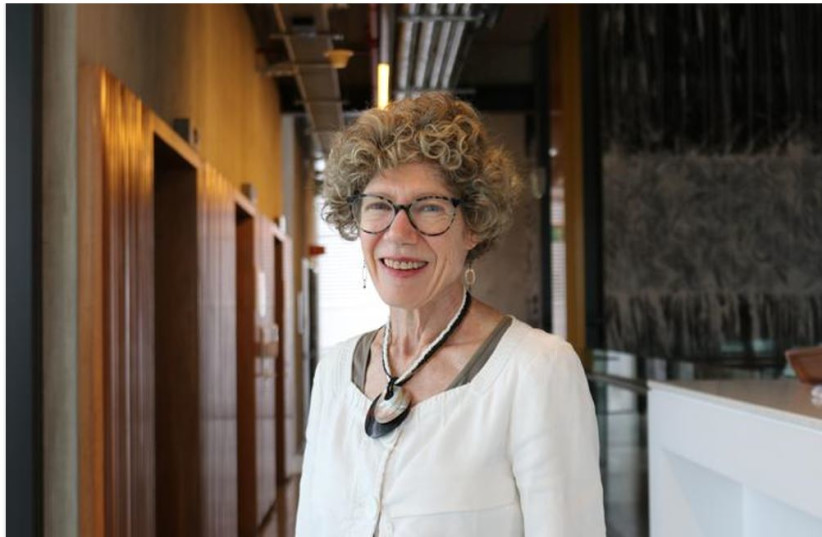Australian researchers have found a way to predict an older person’s risks for fractures in the future – ask them to walk one kilometer. If they can do so without difficulty, their bone health is probably satisfactory.
Researchers at the Garvan Institute of Medical Research have just published their study in the journal JAMA Network Open under the title “Patient Self-Assessment of Walking Ability and Fracture Risk in Older Australian Adults,” which suggests that simply asking a patient about walking limitations could allow clinicians to identify those in need of further bone health screening and prescribe interventions that could prevent fractures from occurring.
Fractures affect about 40% of women and 25% of men 60 years and older, and their incidence will increase exponentially over the next decades. The personal burden of fractures encompasses an increased risk of disability, loss of independence, additional fractures, and premature death.
Muscle function is tied to fracture risk not only due to its association with the risk of falls but also due to its intimate association with bone loss, which is one of the strongest fracture risk predictors, the team wrote.
“It is well known that bone and muscle tissues communicate via paracrine and endocrine signals to coordinate the response to loading and injury across the whole lifespan. In the aging process, bone loss and muscle loss tend to occur simultaneously, leading to increased risk of falls, fractures, and mortality. Additionally, several epidemiological studies have shown that physical activity is linked with a reduction in the risk of fracture in both women and men.”

“We’ve discovered that trouble walking even short distances appears closely tied to higher fracture risk over the following five years,” said lead author Prof. Jacqueline Center, head of Garvan’s clinical studies and epidemiology lab. “Just a few simple questions about how far someone can walk could give doctors an early warning sign to check bone health.”
Higher risk for fractures in men
The researchers examined data on nearly 267,000 adults aged 45 and older from the Sax Institute’s 45-and-Up-Study, a major ongoing research initiative that has been tracking health outcomes in adults in Australia’s New South Wales for more than 15 years.
Participants were asked if health issues limited their ability to walk various distances, with answer options of “not at all,” “a little,” or “a lot.” They were then followed for five years to track fracture outcomes.
The researchers found that one in five adults reported some walking limitation at the beginning of the study. Those with more difficulty walking were significantly more likely to experience a fracture during follow-up. For example, women who said they were limited “a lot” in walking one kilometer had a 60% higher fracture risk than women with no limitation. For men, the increased risk was over 100%.
“We saw a clear ‘dose-response’ pattern, where greater walking limitation meant higher fracture risk. This suggests a direct relationship between low walking ability and weaker bones,” noted first author of the study Dr, Dana Bliuc, a senior researcher at Garvan.
About 60% of all fractures in the study were attributable to some level of walking limitation. The link remained strong even after accounting for other factors like age, falls, prior fractures, and weight, and the findings were consistent across different fracture sites like hips, vertebrae, arms, and legs.
“In this generally healthy community-based population, we still found 20 % of people had trouble walking a kilometer,” said Center. “We think this simple assessment could help identify many more at-risk individuals who may benefit from bone density screening or preventative treatment.”
Osteoporosis medications, lifestyle changes, and other interventions are available to improve bone strength and avoid first or repeat fractures, but screening rates currently remain low because many miss out on fracture risk assessments. Finding easy but accurate ways to detect at-risk people is an important target for research.
“Fracture risk assessment generally relies on a bone-density test, which many people have not had when seeing their doctor,” Center added. “Asking about walking ability takes just seconds and could be a free, non-invasive way to tell if someone needs their bones checked.”
The researchers stress that walking limitations may have many causes beyond weak bones, from heart disease to arthritis. However, difficulty in walking even short distances appears closely tied to fracture risk independently.
“We hope these findings will encourage clinicians to consider walking ability as a red flag for possible bone health issues. For patients, if you can’t walk a full kilometer comfortably, it may be wise to ask your doctor about getting your bones checked,” Bliue concluded.
